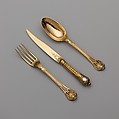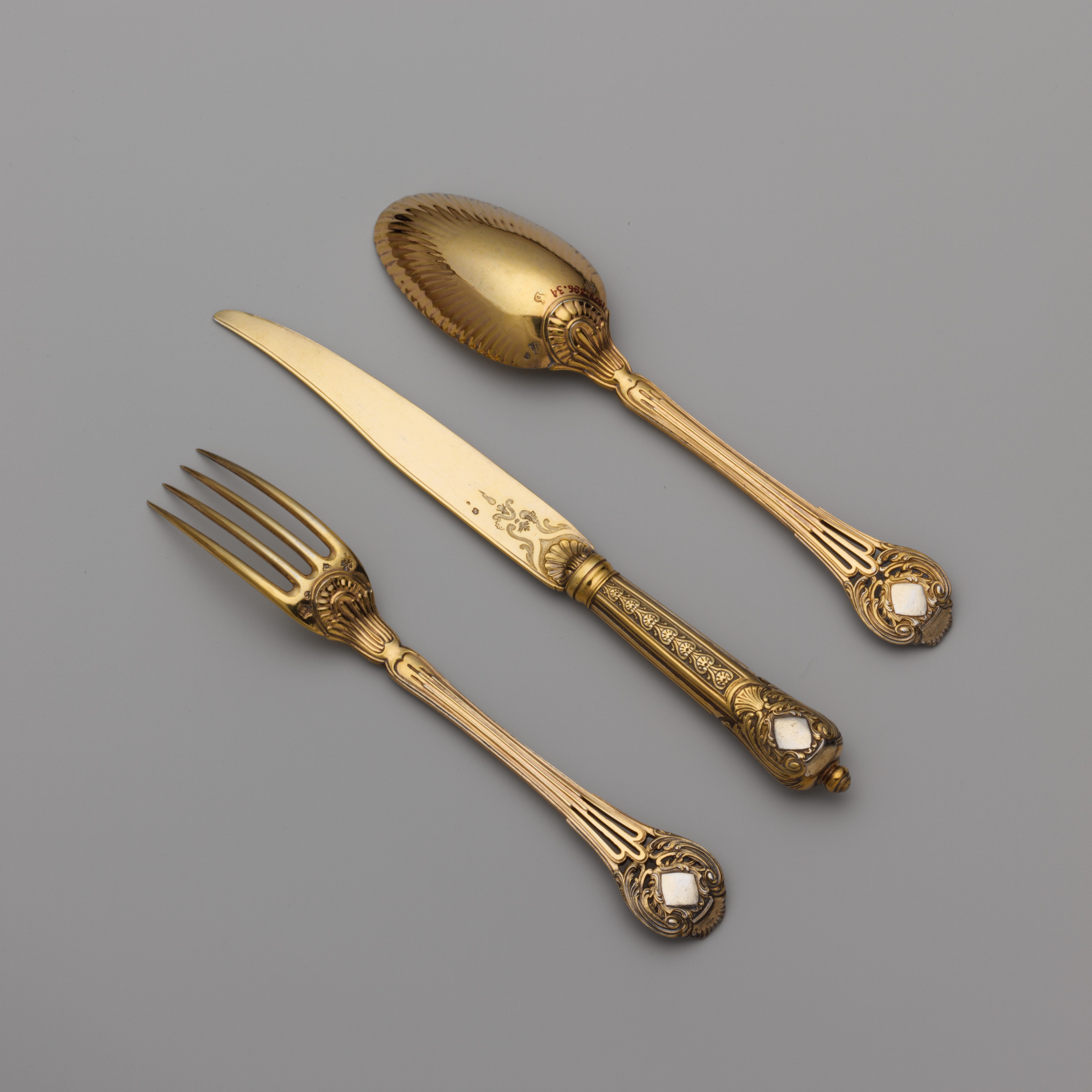Set of six forks (part of a set)
The tooled leather box contains six couverts—the French term for two or more matched pieces of flatware—which in this instance each comprise a fork, spoon, and knife. Six identical couverts housed in a similar box are also in the Museum’s collection. It is not known for whom these thirty-six pieces of flatware were made because the coats of arms that decorated each fork, knife, and spoon have been erased. However, the two boxes are decorated on the lids with the Noailles arms, suggesting that a member of that distinguished aristocratic family owned the cutlery in the eighteenth century.
The designs of the flatware are unusually elaborate and ambitious, especially in the use of openwork in the stems of the fork and spoon, and in the molded and chased decoration of the knife blades. The amount of work required by the complexity of the designs marks these as especially fine pieces of silver cutlery. The two sets date from the years 1767–71, but the designs of the fork, spoon, and knife closely resemble those of a gilt silver dessert service made in 1744 by the celebrated silversmith Thomas Germain (1673–1748). Germain’s designs were then copied twenty years later by his son, François-Thomas Germain, for a gold couvert that formed part of the celebrated service made by the latter for the Portuguese court. One of the many silversmiths who assisted Germain with the Portuguese commission was Louis-Joseph Lenhendrick, whose mark appears on the Museum’s flatware. As Lenhendrick had also been apprenticed to the elder Germain, he would have been well acquainted with the design of this couvert.
Due to rights restrictions, this image cannot be enlarged, viewed at full screen, or downloaded.
This artwork is meant to be viewed from right to left. Scroll left to view more.




